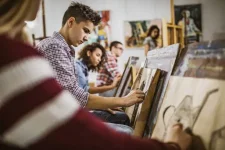The Problem with Traditional Education
Education has long been seen as a gateway to personal and societal growth. However, many traditional education systems focus heavily on memorization and standardized testing, often leaving little room for curiosity, exploration, and creativity. Students are frequently encouraged to find the “right answer” rather than ask thoughtful questions or experiment with ideas.
The Impact on Creativity
This rigid focus discourages risk-taking and penalizes failure—two vital components of creativity. Subjects that nurture creativity, such as art, music, and drama, are often treated as secondary or optional. Meanwhile, emphasis on logical and analytical skills tends to overshadow artistic and innovative talents. The grading and ranking systems further fuel competition rather than collaboration, making it difficult for students to explore creative paths.
Why Change is Needed
Our rapidly evolving world demands problem-solvers, innovators, and creators. The current education structure was designed during the industrial era, which required conformity and repetition rather than innovation. To prepare future generations for today’s challenges, we must rethink how we teach and what we value in education.
Conclusion
Education should ignite curiosity, encourage questioning, and empower students to dream and build. Creativity isn’t only for artists; it’s essential for engineers, entrepreneurs, scientists, and more. Without reform, our education system risks stifling the very potential it aims to develop.
What’s your take? Do you think education suppresses creativity, or have you witnessed positive changes? Share your thoughts below!
Education has long been seen as a gateway to personal and societal growth. However, many traditional education systems focus heavily on memorization and standardized testing, often leaving little room for curiosity, exploration, and creativity. Students are frequently encouraged to find the “right answer” rather than ask thoughtful questions or experiment with ideas.
The Impact on Creativity
This rigid focus discourages risk-taking and penalizes failure—two vital components of creativity. Subjects that nurture creativity, such as art, music, and drama, are often treated as secondary or optional. Meanwhile, emphasis on logical and analytical skills tends to overshadow artistic and innovative talents. The grading and ranking systems further fuel competition rather than collaboration, making it difficult for students to explore creative paths.
Why Change is Needed
Our rapidly evolving world demands problem-solvers, innovators, and creators. The current education structure was designed during the industrial era, which required conformity and repetition rather than innovation. To prepare future generations for today’s challenges, we must rethink how we teach and what we value in education.
Conclusion
Education should ignite curiosity, encourage questioning, and empower students to dream and build. Creativity isn’t only for artists; it’s essential for engineers, entrepreneurs, scientists, and more. Without reform, our education system risks stifling the very potential it aims to develop.
What’s your take? Do you think education suppresses creativity, or have you witnessed positive changes? Share your thoughts below!

